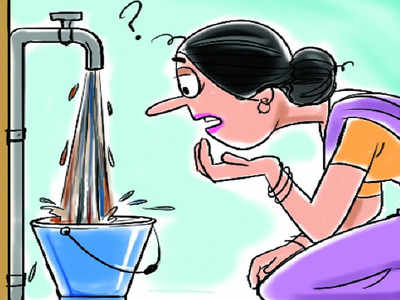Water authority remains inactive as Kochi struggles to quench thirst
The Hindu 31.03.2013
Water authority remains inactive as Kochi struggles to quench thirst

DRY SPELL:Despite the Kerala Water Authority’s claims of increasing the
supply, people in the city have to depend on tanker lorries for water.—
Photo: By Special Arrangement.
With water consumption going up and the supply remains
stagnant, people who depend on the water distribution network are facing
a hard time this summer. In many areas, they have resorted to using
pumps to pull as much water out of the pipes as possible, even though
it’s illegal and invites harsh penalty from the Kerala Water Authority
(KWA).
Most of the Water Authority sub offices have
stopped giving new connections in the district. Panchayats like
Chellanam, Cheranelloor, Varapuzha, Mulavukkad and Eloor are among the
worst-hit. The supply pipelines have been empty for over a month now.
Demand goes up
Though
the demand in Kochi in 2012-13 was around 410 million litres a day, no
action has been taken to meet the demand. A KWA official said the Aluva
water works that supplies the water in the city was increasing its
capacity from 225 mld up to 257 mld. Yet, this summer people have had to
depend on tanker lorries to meet their demand. The water consumption
level of an individual had been recently revised (prior figures about 4
years ago) from 40 litres a day to 70 litres in rural areas and from 150
litres to 200 litres a day in urban areas.
KWA helpless
The
Water Authority has no system of its own for tanker lorry supply,
leaving the work with local bodies. “We cannot afford to have a system
of dedicated water supply because of the power disruption in the State,”
said a senior official at the Water Authority.
“The
usage of motor pumps to suck water is rampant in Chellanam,” said
panchayat president, K.P. Thankachan. This had resulted in saline water
getting mixed with the distribution system, he said. The situation has
been continuing for years. Only 40 per cent of people in the panchayat
have water connection. Others depend on public taps and water tankers
provided by the panchayat. Despite the supply of six water tankers, the
panchayat has requested the government to provide two more tankers.
The situation at Cheranelloor panchayat is worse, according to panchayat president Suresh Babu.
A
sit-in by the residents a few months ago resulted in some water getting
diverted to this panchayat and repair works on the pipelines. But the
crisis continues as many parts of the panchayat still lacks supply, he
said. The panchayat is still awaiting the Collector’s sanction for water
tankers supply as it does not have sufficient resources to provide
water through tanker lorries.
The neighbouring
Varapuzha panchayat provides 36,000 litres of water through tanker
lorries every day even though 80 per cent of the people have water
connections, said Mercy Johny, panchayat president.
The
Maradu project of 100 million litres a day under the Jawaharlal Nehru
National Urban Renewal Mission is one of the major venture that is
likely to resolve much of the woes plaguing the supply system.
However,
mired in controversy over laying of pipelines from Piravom to Maradu,
the project is being implemented at a pace that would perhaps be
finished sometime early next year, according to senior officials in KWA.
The
sanction for the project had come in 2007 and the initial work had
begun in 2008-09. Nearly three years were lost in taking the project
ahead.
Another project that is expected to provide
more water is the augmentation work at Muppathadam that will provide
about 8.5 mld to serve some of the nearby panchayaths’ demands after
meeting Kadamakudy’s 4.5 mld.
A major project, Rs.
800 crores, with a capacity of 190 mld proposed at Kalamassery is still
on paper. According to senior officials at KWA it might take up to three
months for getting the sanction for the project as the Union Ministry’s
queries regarding the project were answered only recently. Since the
project will be the main supply augmentation plant for the existing
network, the work can be completed in about two-three years, said the
officials.

